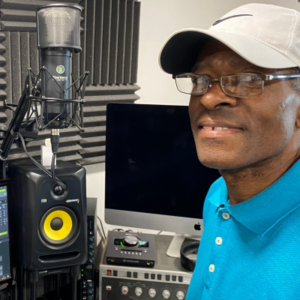Marvin Gaye started 1968 still looking for that big hit that other Motown acts had already achieved. Actually, he had already recorded it. He just needed Berry Gordy and the Quality Control team to sanction its release. Strangely, despite Norman Whitfield’s urging, Berry Gordy was still reluctant to issue Gaye’s version of “I Heard It Through the Grapevine”, as he thought it would fail to sell following Gladys Knight’s recent success with the song.

Instead, a track entitled “Chained” was released on 20th August, just days before its parent album was issued by Tamla. The song was written and produced by Frank Wilson and has a strong Gospel feel, with the Originals providing a male vocal response to Gaye’s calls. The opening bass riff and conga beats are followed by the driving vocals, with subtle horns and strings enriching the sound. The single peaked at number eight on the Billboard R&B Singles Chart and number thirty-two on the Billboard Hot 100 Singles Chart.

Six days after its release, the single was followed by the album “In The Groove”. The twelve tracks offer an eclectic mix of Motown and non-Motown songs. Frank Wilson wrote two of them, “Chained” and “Every Now and Then”, (co-written with Eddie Holland), a bouncy dance track. Ashford & Simpson added one more, “Tear It On Down”. Ivy Jo Hunter co-wrote three songs, the excellent “You”, released as a single in 1967, “Loving You Is Sweeter Than Ever” (co-written with Stevie Wonder), and “It’s Love I Need” (co-written with Stephen Bowden). Anna Gordy, Marvin’s wife, had a hand in two songs. The final track on the album is Gaye’s version of the Drifters’ “There Goes My Baby”, a real classic.

Marvin Gaye 1968
Photo: Trade Ad (Wikimedia Commons)
At last, Gaye committed himself to genuine Soul and R&B and the public response was good. The album charted at number two on the Billboard R&B Albums Charts, number sixty-three on the Billboard Hot 200 Albums Chart and number thirty-six on the Official UK Albums Chart. The album has continued to sell steadily in the UK; it was awarded gold certification in 2013 by the BPI!
The best of the twelve songs on the album was the sole contribution by Norman Whitfield and Barrett Strong, “I Heard It Through the Grapevine”, which picked up a lot of radio play following the album’s release. Finally, Berry Gordy saw the light. The track was released as a single in October, a year and a half after being recorded, and it sailed to number one on the Billboard Hot 100 Singles Chart, the Billboard R&B Singles Chart, the Cash Box Top 100 Singles Chart, and the Official UK Pop Singles Chart. It stayed at the top in the USA for seven weeks, through December 14th 1968 and January 25th 1969. It became Motown’s biggest-selling single, overtaking Gladys Knight & the Pips’ version of the same song.

The single was a world-wide hit, achieving gold certification in Italy and Spain, silver, gold and platinum for the UK releases, and total sales to date of over four million copies in the USA. In 1998, Gaye’s version of the song was inducted into the Grammy Hall of Fame.
So, what made it so special? First, Norman Whitfield came up with the idea of slowing the tempo and creating a more mysterious feel to the sound. The opening electric piano riff and drum beat set the tone. A swirl of strings and then the funky, dancing undertone of the bass are set against the sweet backing voices of the Andantes. It is simple, hypnotic and unforgettable. Marvin Gaye resisted a suggestion from Norman Whitfield that he sing the lyrics in a higher register. Gaye felt that he could create greater drama by starting at the lower end of his three-octave range and climbing to an upper-register climax. Norman Whitfield agreed and then drew a typically rich performance from the Funk Brothers. Paul Riser wrote a string arrangement that added sensitive highlights to an already wonderful song.
From the mid-sixties to 1968, producing a recording of such quality involved a certain kind of alchemy. Using eight-track technology, each of the elements of a song could be recorded separately and then mixed together by the sound engineers under the direction of the producer. It took over a month to get all the parts in place. According to Bob Olhsson (one of Motown’s sound engineers) in discussions regarding Gaye’s version of “I Heard It Through the Grapevine”, Motown recordings up to 1968 (when a sixteen-track system was installed) had an in-built distortion caused by the set-up in Studio A:
“The Wurlitzer piano is pretty distorted to begin with. The drum distortion was mostly our homebrew 12AX7xUTC A-10 mike preamps used without patching in the mike pads. They had a pretty bad resonance above 10 k that was less of a problem on drums than the other instruments we had to record at the same time. The bass distortion was caused by recording the direct bass real hot on track 8 of the homebrew 8-track because there was a lot of hum on the edge tracks. That “sound” went away when we went 16 track in 1968.” (Bob Olhsson on Steve Hoffman Music Forums website 17th September 2006).
Often, the session musicians and backing singers didn’t hear the final version, until they switched on the radio, but their contributions were critical to the success of any records. At the time, they were not credited, but studios usually kept a record of who had played on a particular session. Thanks to those records, we know who helped Marvin Gaye to number one. The list isn’t very long: Earl Van Dyke (Hammond organ), Johnny Griffiths (Wurlitzer electronic piano), Richard “Pistol” Allen (tom toms), Uriel Jones (drums), James Jamerson (bass), Jack Ashford (percussion), the Andantes (backing vocalists Jackie Hicks, Marlene Barrow, Louvain Demps), string players from the Detroit Symphony Orchestra, led by Gordon Staples, Paul Riser (string arranger), Norman Whitfield and Barrett Strong (songwriters). Norman Whitfield produced the single.
Marvin Gaye had come to Detroit ten years before, as a session drummer for Harvey Fuqua’s tiny record company. When Berry Gordy bought the company, Gaye found an opportunity to begin his career as a solo singer. Now, at Christmas 1968, he had reached the top.
There was an interesting development right at the end of 1968 regarding the “In The Groove” album. The marketing team at Motown realised that there was an opportunity to boost sales of the album by renaming it “I Heard It Through the Grapevine”, thus taking advantage of the huge international sales of the single. The album was therefore re-badged, with a new cover, while retaining the original code number TS285.

















